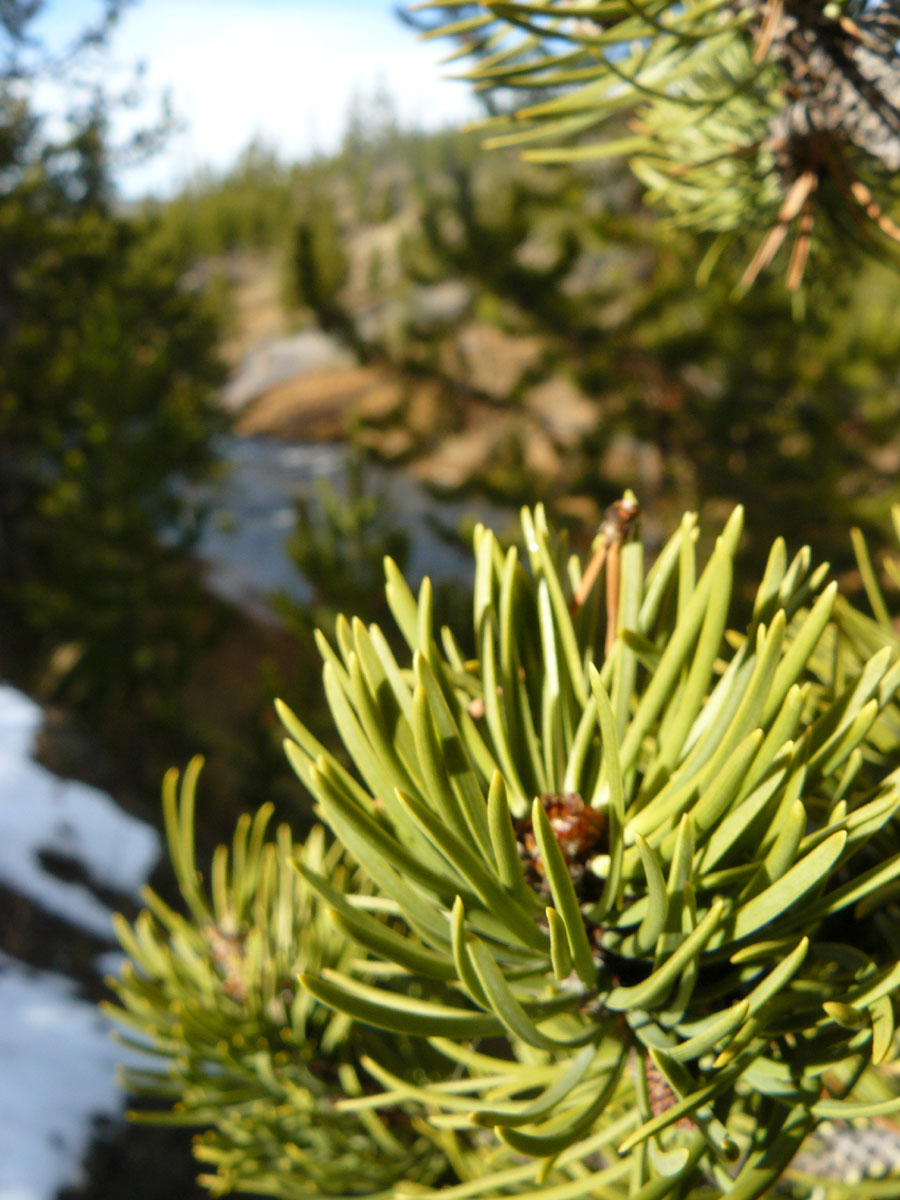 Location Taken: Yellowstone National Park, Wyoming
Location Taken: Yellowstone National Park, Wyoming
Time Taken: October 2012
I’ve always liked pine needles.
It’s such an interesting solution to the problem of leaves and cold weather.
You see, leaves are the way that trees absorb energy from the sun. The surface is filled with cells that can photosynthesize, usually green chlorophyll. And in order to maximize the amount of sunlight absorbed, it helps if the leaves are as wide and flat as possible.
Wide is important because you can pack as many chlorophyll cells together as you can feeding off of one support network (aka the branches and stems that support the leaves and supply them with water). Flat works well for the same reason. The sun is only hitting one side of a leaf at a time, and is certainly not hitting the inside of anything thicker than flat, so keeping it flat helps preserve resources.
But this does have a few issues. It doesn’t deal well with temperature extremes. In dry and hot conditions, flat leaves would mean that the water evaporates before it reaches all of the leaf, and the edges would curl and dry out. So desert plants frequently have wide leaves that aren’t flat, and fill the inside with water-retaining cells. That’s where succulents and cacti come from.
On the other end of the scale, wide and flat leaves don’t do well with freezing temperatures either. Water expands when it freezes, which easily ruptures the delicate leaves. That’s why so many trees with those leaves shed them in the fall and spend months hibernating until spring temperatures lets them unfurl their energy collectors once again.
But if you get a bit further north (or south, if you’re in the southern hemisphere), the time between first freeze and last frost starts to get significant. There’s just not enough days above freezing for deciduous trees to do well.
That’s where pine needles come in.
They’re not wide, and they’re not flat. Instead, they’re long and hard and easily shed. There aren’t any thin parts to rupture if it freezes and there’s a tube in the middle to spread natural antifreeze through the needle. And the hard leaves make it tough for heavy snow to damage them. Oddly enough, the trees have softer wood as another way to deal with the snow. If the snow gets too heavy on one bough, it can bend down rather than break and slide that snow right off.
All these changes mean pines aren’t as efficient at gathering solar energy as their leafy compatriots. The needles have to support much more of a support network to function, and they have a significant portion of their chlorophyll cells at shady angles. But they mean the tree doesn’t have to shut down for winter. It can keep on gathering every scrap of light that comes their way, no matter how short and low-angled it gets. And in the snowy lands of the far north, where winter comes early and hard, that expands the growing season from two or three months to just about all year long.
Seems quite worth a change in design.
